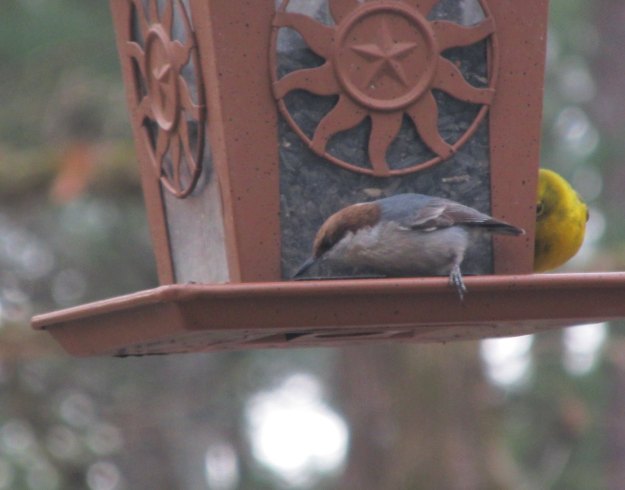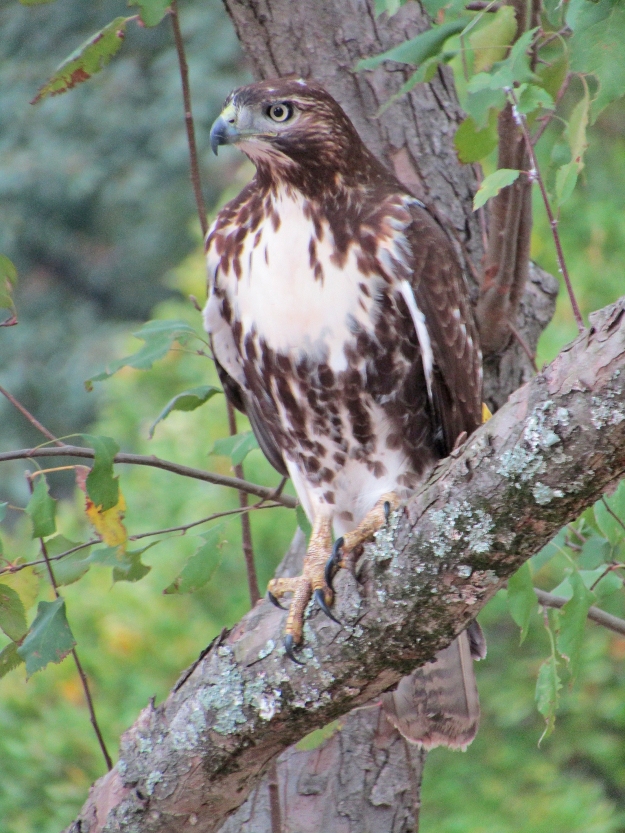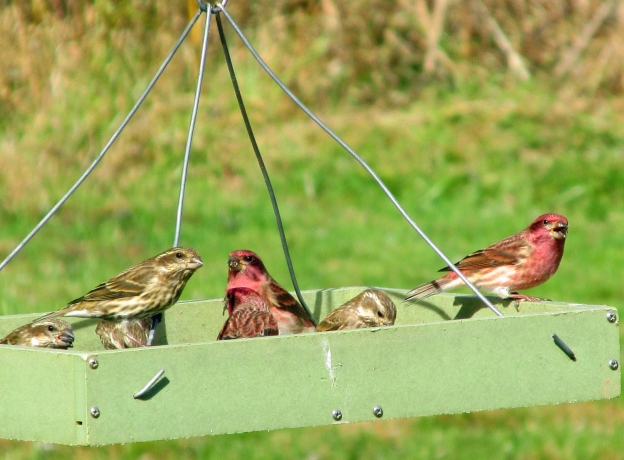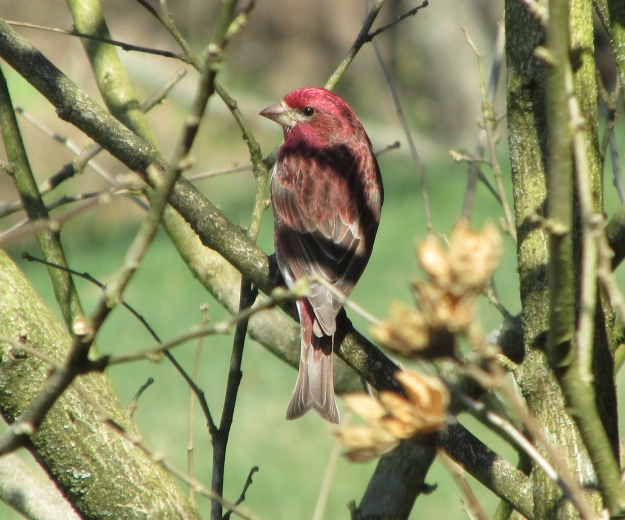
Photo by Bryan Stevens • Red crossbills use unique beaks to pry seeds from a conifer cone. These birds are among the so-called “northern finches” that occasionally stage massive winter migrations fueled by food shortages in their usual range. They are also nomadic residents throughout the year in northeast Tennessee and western North Carolina.
I recently got a shoutout on Facebook from Tom McNeil, a longtime birding friend and a neighbor here in the mountains of Northeast Tennessee. Tom asked if I’d been seeing any red crossbills on my side “of the ridge” and informed me he had been seeing these odd-beaked birds for the past couple of weeks.
I hadn’t noticed any crossbills and told him so, but I am definitely keeping alert for them after Tom’s notification. Every winter I hope my feeders will be visited by representatives of a group of birds known collectively as “northern finches.” This loose grouping consists of a half dozen species — purple finch, pine siskin, evening grosbeak, pine grosbeak, white-winged crossbill, red crossbill and common redpoll — that periodically stage irruptions from their traditional northern ranges to push south in large numbers during the colder months.

Photo by Bryan Stevens • A red crossbill uses its unique beak to pry seeds from a conifer cone. These birds are among the so-called “northern finches” that occasionally stage massive winter migrations fueled by food shortages in their usual range.
I’ve been feeding birds since the winter of 1993, and over the years, the first three species I listed have graced my feeders. Although I haven’t seen any this winter, pine siskins and purple finches have continued to be occasional winter visitors. Sadly, however, I haven’t been visited by showy evening grosbeaks since the late 1990s. The last time I saw an evening grosbeak in the region was back in 2000.
I’ve never laid eyes on a common redpoll, although I spent several hours 20 years ago staking out a yard in Shady Valley, Tennessee, in an unsuccessful bid to observe a redpoll that had been a reliable visitor at a feeder in that small community.
I have seen red crossbills, but my observations of these birds have always taken place during the summer months. Pine grosbeaks and white crossbills are almost unheard of in the region, and I haven’t had opportunity to visit the nesting summer ranges of these birds.
So, as the weather turns cold each year, hope springs eternal that perhaps this will be the winter that will bring some of these northern finches to my feeders, or at least to a feeder in the general area.
The factor that drives these irruptive northern finches to come south is food — or the lack thereof — in their usual ranges. When seed crops are poor in the north, these seed-eating birds may wander as far south as the Gulf States in search of supplemental food sources such as feeders stocked with sunflower seed.

Photo by Public Domain Photos/Pixabay.com • Crossbills and other finches often migrate in source of food.
The red crossbill is a specialist when it comes to foraging for its food. The bird uses its unique bill to open the cones of various conifers. The upper and lower mandibles of the bill are twisted in a way to make them cross when the beak is closed, hence the name “crossbill.”
Worldwide, there are only five species of crossbills — the red crossbill of North America, Asia and Europe; the parrot crossbill of northwest Europe and western Russia; the Scottish crossbill of Scotland; and the white-winged crossbill of Canada, the northern United States, including Alaska, as well as Asia and northeastern Europe. There’s also the endangered Hispaniolan crossbill of the island of Hispaniola in the Caribbean.

Photo by George Gentry/U.S. Fish & Wildlife Service • A male evening grosbeak perches on the side of a sunflower-stocked feeder.
W. Herbert Wilson Jr. wrote an article about the northern finches for the Oct-Dec. 1999 edition of “North American Bird Bander.” Wilson noted that supplemental food, such as feeder fare, can influence the migratory habits of many birds, including these finches. He cited the example of black-capped chickadees, which have been shown to demonstrate an increased chance of survival during lean winter times when they have access to feeders. He also noted that the provision of food at feeders has helped birds like the tufted titmouse, house finch and Northern cardinal extend their range northward. In part, Wilson theorized that more people are feeding birds closer to the northern climes where these birds live. As a result, the long-distance irruptions are no longer necessary to find supplemental food.
Other theories have also been advanced by other experts, including changing migratory routes, diminishing overall finch numbers and climate change. Theories aside, I will continue to hope some of these birds wing their way toward my feeders this winter. If I’m lucky, this could even be the year the evening grosbeaks return! If anyone is seeing any of these “northern finches,” I’d
love to hear about it. Contact me at ahoodedwarbler@aol.com.
























